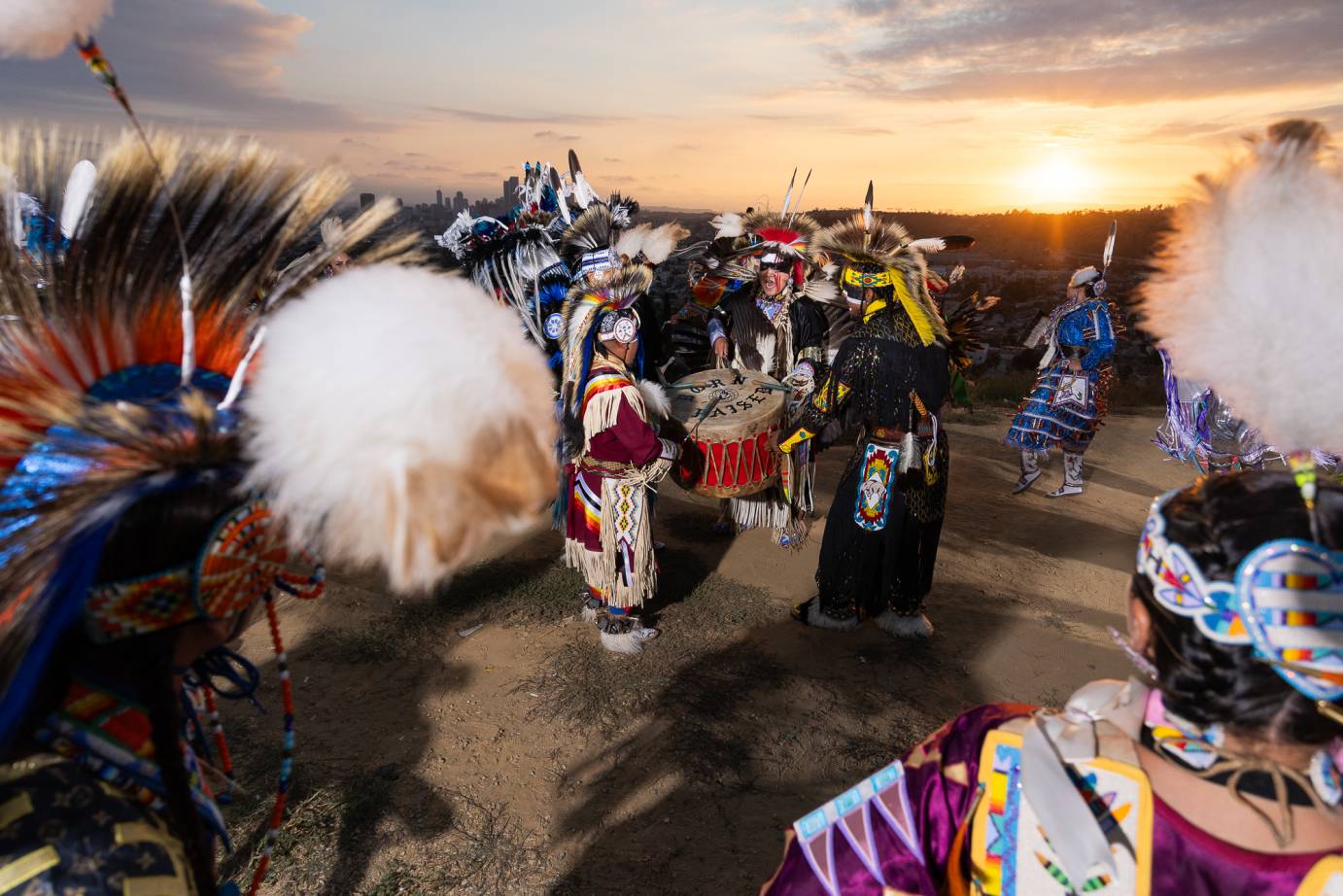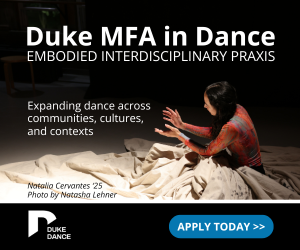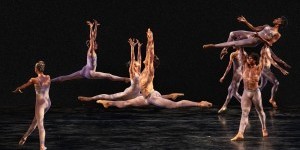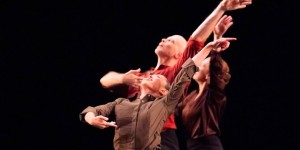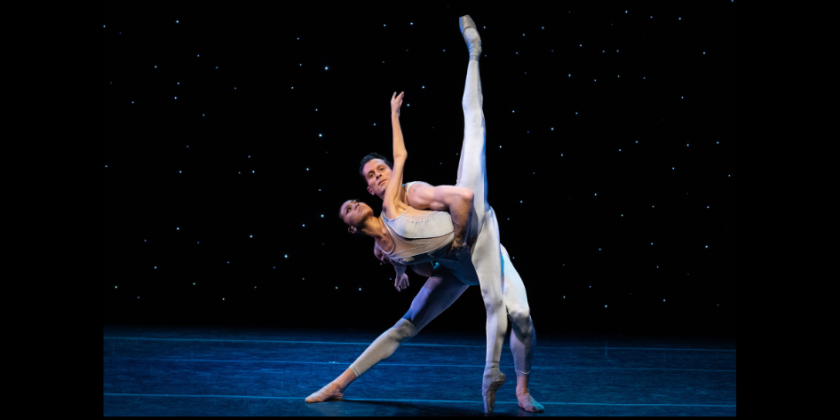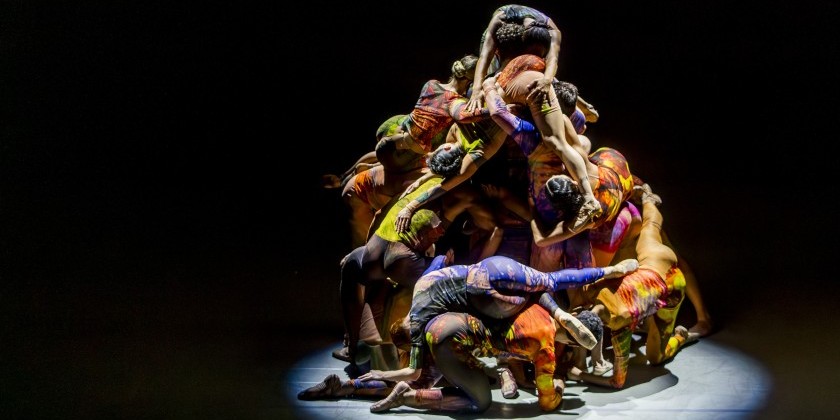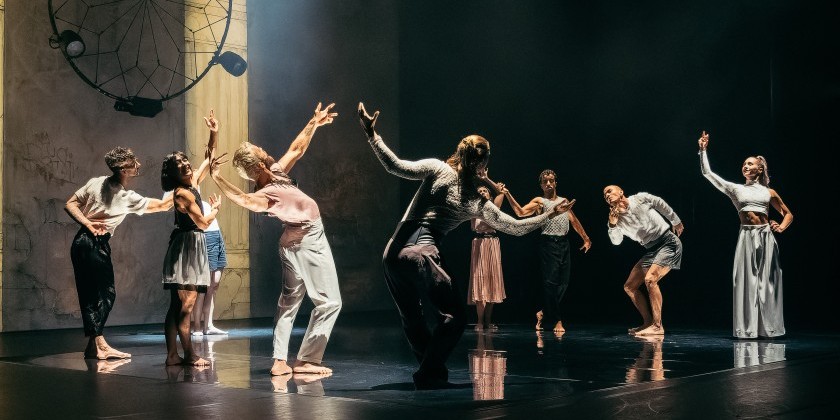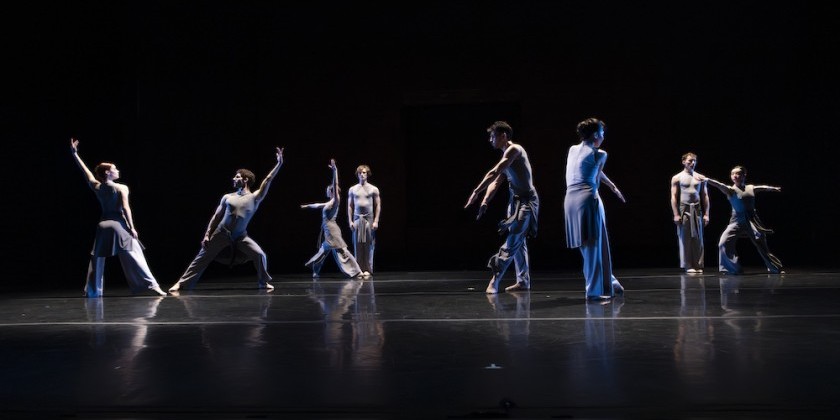IMPRESSIONS: Indigenous Enterprise Dances Their Story in "Still Here" at The Joyce Theater
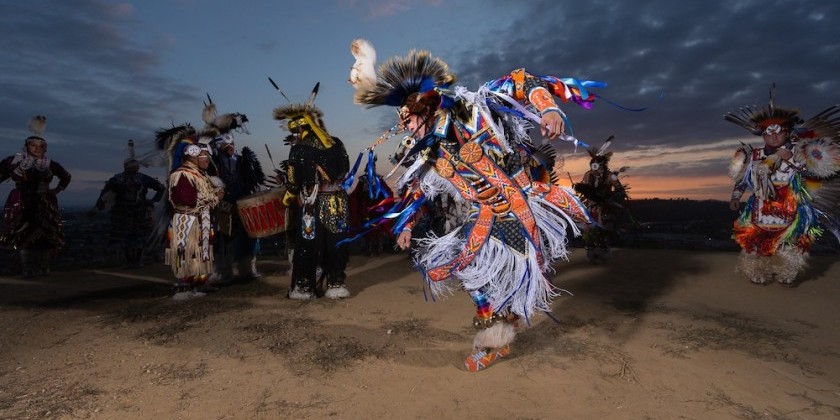
Writer/Director/Choreographer: Kenneth Shirley
Musicians: Daisy Jopling (violin), Adrian Thomas (flute), Tristan Field (guitar), Every Voice Choirs, Powwow Drum Groups including Northern Cree, Calling Eagle, Sharpshooter, The Descendants, Wild Band of Comanches, Blazing Bear
Dancers: Kenneth Shirley, Dominic Pablo, Josiah Enriquez, Desirae Redhouse, Dezi Tootoosis, Jaamal Jones, Manny Hawley, Logan Booth, Jackson Rollingthunder
Lighting Indigenous Enterprise // Animation Studio Novella
Animation Director + Co-Writer: Stephanie Gumpel
Background Artists: John Holsinger + Maya Puyat
Animators: Maya Puyat (Lead), Amy Lee Ketchum, James Morr, Ngoc Ngo, Greg Garay, Daisy Chesler
Additional Artists: Jonathan McCoy, Spencer Smith, Aaron Hadley, James Bochanski
Voice Actors: George Aguilar, Luca Smith, Yanabah Redhouse
Celebrating their 10th anniversary, Indigenous Enterprise took The Joyce Theater by storm, completely transforming the space and audience through their work, Still Here. The dancers created an environment of encouragement and vocal support. A voiceover prior to the show urged us to make our support known through sounds of affirmation, converting the venue into a micro-powwow of its own, a space of love, admiration, and joy. Pride radiated as the drum, like a heartbeat, carried us through the performance.
.jpg)
Powwow dance is based on ceremonies and traditions as old as time. Modern powwows began in the late 19th and early 20th century as a way of bringing Indigenous peoples of many backgrounds together to celebrate Native culture across Turtle Island (now known as North America). Powwows consist of a variety of dance forms, recreational and adjudicated, and serve to preserve and uplifting Native culture and art.
Throughout the evening, Indigenous Enterprise welcomed the audience, people of all backgrounds to partake and enjoy the incredible regalia, movement, and radiance of intertribal dance. I immediately noticed how many Native folks were in attendance on opening night. Their presence in the space was full of pride and a deep understanding of the dance onstage.
Enterprise expertly used animated film as a conduit for sharing their culture in a way that was accessible for all. The intricate animations, brought to life by Studio Novella, told the story of a grandfather, Johnny, speaking to his grandson, Nataani, about the history and traditions of Native dance and song. By following this story, we as audience members became familiar with the origins and significance of each dance.
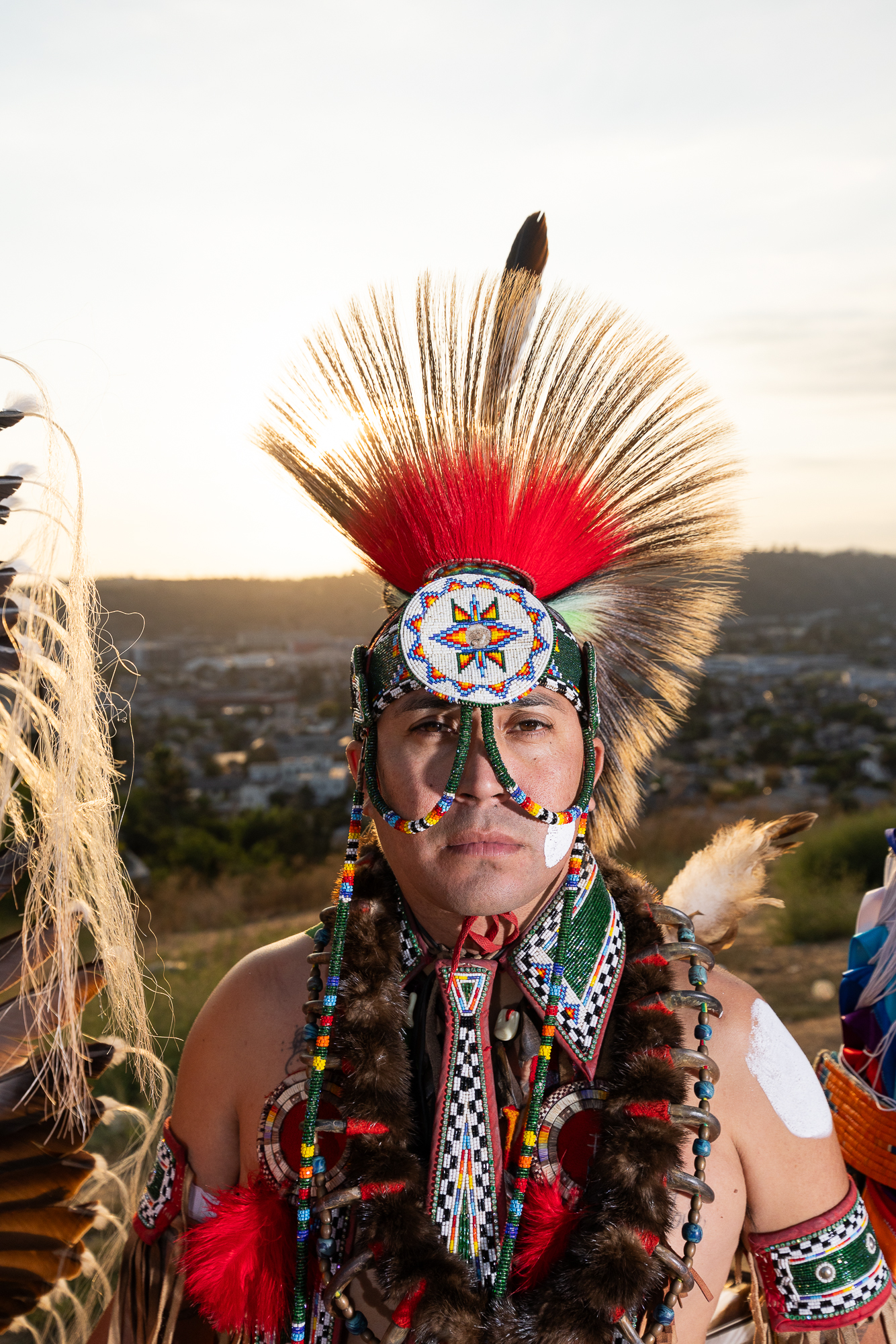
Native cultures often survive through storytelling and oral histories. There were many times throughout history when participating in and documenting Indigenous culture was considered illegal and dangerous. A tribute to the ancestors, Still Here highlighted the dual joy and pain carried by Native peoples to this day.
I was deeply moved by the energy and acceptance created by the dancers, and as a reconnecting Native myself, this performance helped me connect more deeply to my ancestors and Native kin. I can only imagine the impact the evening had on others like me.
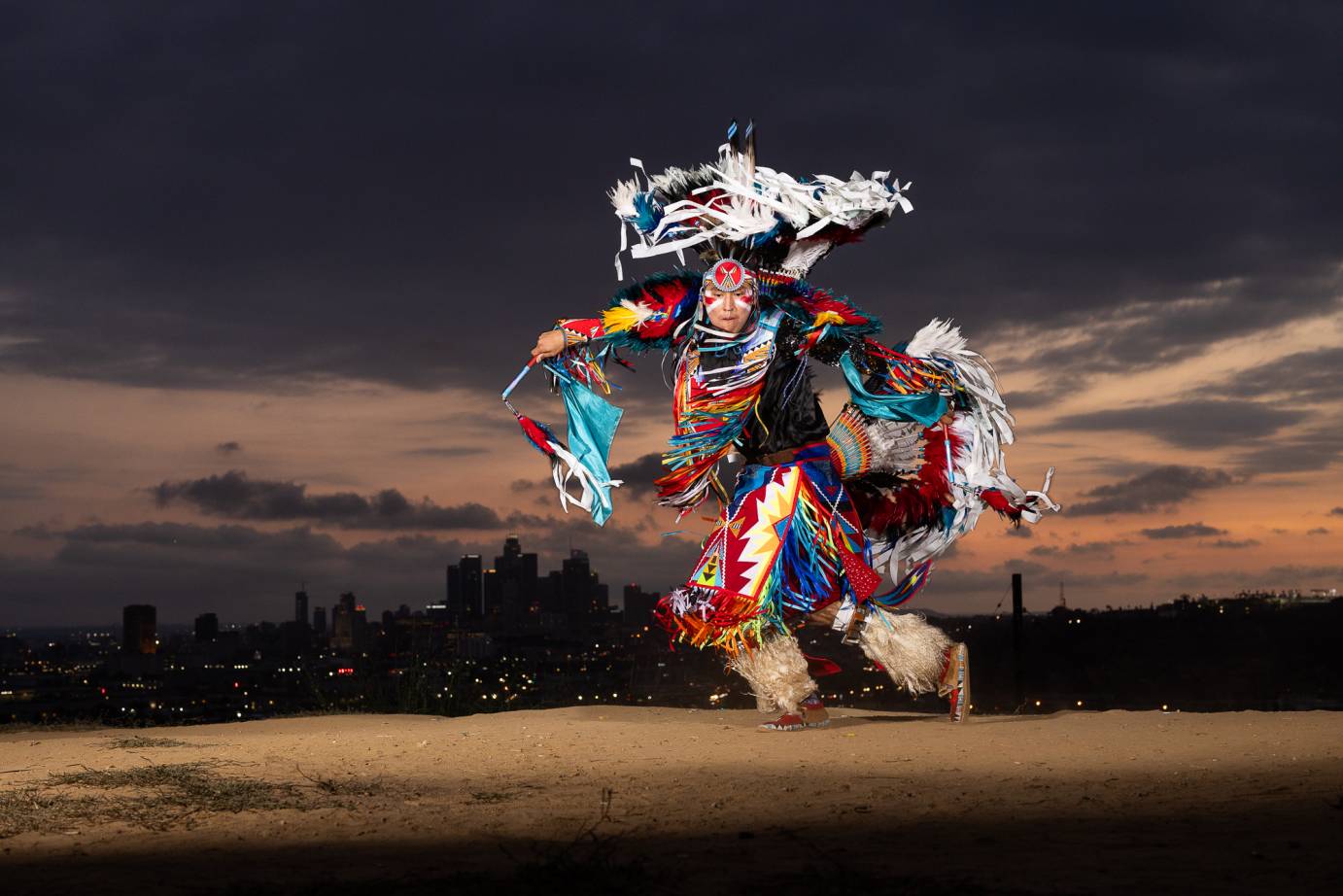
Indigenous Peoples across Turtle Island have faced persecution, brutal treatment on and off reservations, culture-washing and displacement in boarding schools, and other harsh realities that have tried to strip us of our pride and personhood. While these realities were addressed in the performance, the brutality faded away as the dancers took the stage.
The Men’s Grass Dance of the Northern Plains, a ceremonial, healing ritual worked toward balance and peace. Jamal Jones and Manny Hawley performed this dance with intentionality and ease, their fluid yet structured movements held to the pulse of the bells around their ankles. Regalia of medallions, fringe, feathers, and furs grounded them in the synchronicity of their movement. As an opening dance, this offering rooted the audience in tradition and celebrated ancestral knowledge.
The Women’s Jingle Dress Dance of the Ojibwe People was preceded by a film which told the story of a young girl who needed dance as medicine to heal her sickness. Clad in metal cones that jingled, the dancers bounced on their toes to create sound and turned their head sever so slightly to accent the movement. Desirae Redhouse expertly channeled the healing powers of this dance, moving across the stage with grace and dignity.
The Men’s Fancy Dance stemming from the Ponca Tribe of Oklahoma followed. Made to mimic horse movements and prepare warriors for battle, this dance features regalia of elaborate feathered headdresses and bustles. In duet, Kenneth Shirley and Dominic Pablo impressed us, enlivening the space with intricate footwork and fast movement.
Dezi Tootoois followed with a Women’s Fancy Shawl Dance, a dance of empowerment and strength from the Northern Plains region. Representing grace, agility, and endurance and honoring winged creatures, this dance is performed with a long, woven shawl draped across the performer’s upper back. Tootoois reminded us that we are the grandchildren of the ancestors you couldn’t kill through this dance of power and elegance.
The Chicken Dance came next. At first glance, it may seem lighthearted, but in reality, the dance originated from the dream of a tribal leader who killed a chicken and was challenged to carry on its legacy. It is a dance of healing and honor from the Blackfoot People. Jackson Rollingthunder performed here with heft, using a Stomp Song to gather energy and strength. He whistled chicken calls as he flapped his wings and shook his large bustle; unlike the regalia of the other pieces, this one was performed with a bare chest. Rollingthunder reminded us that life is a circle and that all living things are precious.
Finally, Josiah Enriquez performed a jaw-dropping Hoop Dance. He is the current World Hoop Dance champion of the last two years, and gave an impactful performance. The Hoop Dance comes from the Southwestern area of Turtle Island and represents the changing of seasons through imagery of the rabbit, butterfly, eagle, and Creator. Additionally, it symbolizes the circle of life and the past, present, and future. Enriquez’s fluid transitions and detailed shapes became the highlight of the evening and left us all awestruck.
Following the performances, a children's choir was brought to the stage along with several expert drummers. The children beamed as they sang to honor their ancestors and elders. Following the children, each dancer came onstage to introduce themselves and their people, allowing us to recognize and honor their lineages.
The night concluded with all of us screaming our hearts out and erupting in applause.
May this performance serve as a reminder that Natives have made art since the beginning of time and belong in “high art” spaces. Still Here was an honor to witness, and a performance I’ll remember for a lifetime.
